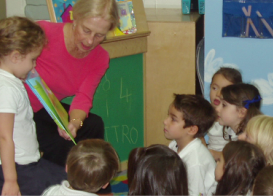Confronting Learning Problems in Children

by Jane M. Healy, Ph.D.,
What is a learning disorder? What causes it? How do you begin to treat it?
Find answers to these common questions in Different Learners: Identifying, Preventing, and Treating Your Child’s Learning Problems by Jane M. Healy, Ph.D.
Quick Take: Confronting Learning Problems
- Most organic learning disorders show up early in life.
- Certain warning signs should prompt further evaluation.
- A misfit between child and school can cause problems or exacerbate existing ones.
- Diagnosis is useful only if it leads to effective treatment.
- Overlabeling wastes time, money, and children’s potential.
- “Differential diagnosis” is a useful starting point.
For the purposes of the Different Learners, we are considering a “learning problem” to be any innate or acquired characteristic that consistently interferes with one or more aspects of learning. In its purest form, a learning disorder involves some variation in the wiring of the brain — often, but not always, inherited — that makes it harder than “normal” for an individual to master one or more of the following:
- traditional academic learning such as language, reading, spelling, writing, math (these are termed learning disabilities)
- social skills, such as understanding and relating to others
- language development
- perceptual-motor and sensory skills, such as balance, athletic ability, eye-tracking, using markers and pencils, copying geometric figures, keyboarding, coping with sudden sensory changes such as unexpected touch or flickering visual stimuli
- executive or personal skills, such as paying attention appropriately, managing one’s behavior, organization, planning ahead, motivation
Whether or not a developmental problem becomes a serious disability depends on:
- its severity
- our expectations for the child at any given age
- how important teachers, parents, and society think this skill is
- how much help we can enlist
Most true learning disorders are neurodevelopmental in origin, meaning that they involve the brain and nervous system and that they “came with the package” — i.e., that whatever is causing the problem is an intrinsic part of the child’s nature and has been present, although perhaps hidden, from birth. A smaller number of children have “acquired” difficulties caused by accidents, illnesses, or other types of brain “insults” that occurred after birth.
I say true learning disorder because, in the troubled world of childhood today, it is becoming increasingly difficult to decide which so-called learning disorders stem from supposed flaws inside the child and which ones are due more to flaws in the culture. When children live in environments that ignore the needs of the developing brain, learning casualties are a natural result.
We are fortunate to have access to a great deal of information about learning and its problems. Remember, however, that we are a long way from knowing everything. Sometimes a parent’s instinct trumps even the best available science.
Each child presents a unique situation and a very special package of abilities that is not easily stuffed into one diagnostic category. Pasting labels on children as if they were cans of soup on an assembly line risks both overdiagnosis and superficial treatment that misses core aspects of the problem. Instead, let’s broaden our view to consider all the factors — neurological, genetic, and environmental — that characterize each child.
ABOUT THE AUTHOR
Jane M. Healy, Ph.D., author of Different Learners: Identifying, Preventing, and Treating Your Child’s Learning Problems (Copyright © 2010 by Jane M. Healy), is a teacher and educational psychologist who has worked with young people of all ages, from pre-school to graduate school. She has been a classroom teacher, reading and learning specialist, school administrator, and clinician. She is currently a lecturer and consultant, and the author of three books about how children do (and don’t) learn, Your Child’s Growing Mind, Endangered Minds, and Failure to Connect.




